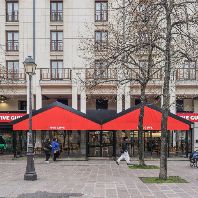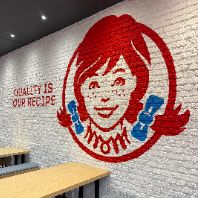Hong Kong continues to rank as the world’s most expensive global retail market, recording prime rents nearly 150% higher than New York and more than 400% higher than London and Paris, according to new research from global property advisor CBRE Group, Inc.
CBRE’s quarterly survey (Q1 2013), which tracks the top 10 most expensive prime global retail markets, reveals that strong demand from international retailers, coupled with a modest supply pipeline, has lead to record-high prime rental rates. Leading the pack, Hong Kong continues to rank in a rental class distinctly above its global peers, recording prime rates during Q1 2013 at $4,328 per ft² per annum.
While markets such as Hong Kong, New York, London and Paris did not record increases in prime rents this quarter, these cities have exhibited resilience due to international retailers continued longer-term strategic expansion strategies which feature a distinct preference for prime space in the best locations in these markets.
Joe Lin, Executive Director Retail, Hong Kong, CBRE, commented: “Prime rents in Hong Kong stand at record highs as tenant demand is steady and inquiries from retailers looking to enter or increase their footprint in the city remain strong. Given that space is so expensive in Hong Kong’s prime shopping streets largely driven by continued demand from international luxury brands, many traditional retailers have moved into more “niche” secondary retail locations as they still want to be in and access the market, but have been priced out of the prime space.”
Ranking as the second most expensive global retail market, New York City ($2,970 per ft²) welcomed several new national and global retailers in 2012 that were attracted by the market’s strong international tourism features. The pipeline for new retail space in New York is low. However, a significant amount of supply is available along Fifth Avenue between 49th and 59th Street.
Europe’s prime retail markets of London ($1,053 per ft²) and Paris ($1,050 per ft²) are holding steady largely due to scarcity of supply and correspondingly high prime rent levels. As witnessed in Hong Kong, many new retailers to the Central London market have been forced to consider alternative locations.
This is most apparent on Bond Street, where retailers have looked to alternative locations in Mayfair. Examples include the fashion retailer Oscar de la Renta, which has now opened a 2,000 ft² store on Mount Street, with Celine also taking an 8,000 ft² unit a few doors down. The openings represent the first UK store for each.
The supply of prime space was tight elsewhere throughout the Asia Pacific region, which helped maintain rent levels in Sydney, Melbourne, Beijing and Tokyo. In Sydney ($1,018 per ft²), demand from international retailers (especially from the US) is high with many new brands set to enter the market in 2013.
Pacific markets gained prominence in the global retail rankings with Brisbane ($739 ft²) and Melbourne ($851 per ft²) now ranking among the most expensive prime retail markets. Thanks to strong turnover and a limited supply forecast for Brisbane’s Queen Street Mall, prime rents as measured in local currency jumped 15% quarter-over-quarter.
As a result, Brisbane’s prime retail rent ranking rose two positions to ninth place. Not only has Brisbane’s mining and other natural resources sectors supported the local economy, population growth for the market as a whole is also serving to boost expectations for future retail growth prospects. As such, growth in its retail sector, in terms of turnover and rental growth is expected to continue in line with the current trend.
Raymond Torto, Global Chief Economist, CBRE, commented: "Prime retail rents across the most expensive global markets have held firm against a backdrop of scarce supply and preference for prime space. Despite subdued retail sales growth and strained consumer sentiments, international retailers remain focused on long-term growth strategies that have resulted in store expansions across many key global markets such as New York, London and Moscow. However, at the current high levels, retailers are considering “off” prime or secondary locations and showing a reluctance to pay record high rates."
Valentin Gavrilov, Director, Research Department in CBRE, Russia, said: “Moscow street retail is still in high demand from the international retailers. It is worth of mentioning that there is a deficit of good quality street retail space, which forces newly coming international brands to open their flagship stores in shopping malls. Some of the newly announced shopping malls projects to be delivered in 2014 are specially designed to meet this demand.
"Besides this factor, the overall commercial real estate market sentiments remain quite conservative, as positive signals about world economy recovery are still weak and non-systemic. As a result, rental rates in Moscow street retail remain stable. However, there is some evidence of appearing growth trend."
Source:CBRE












